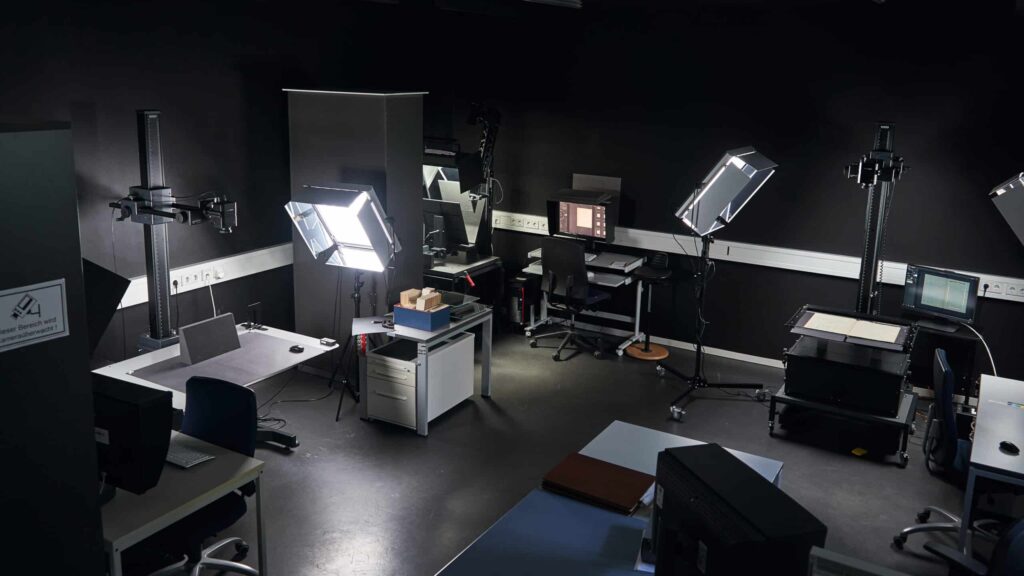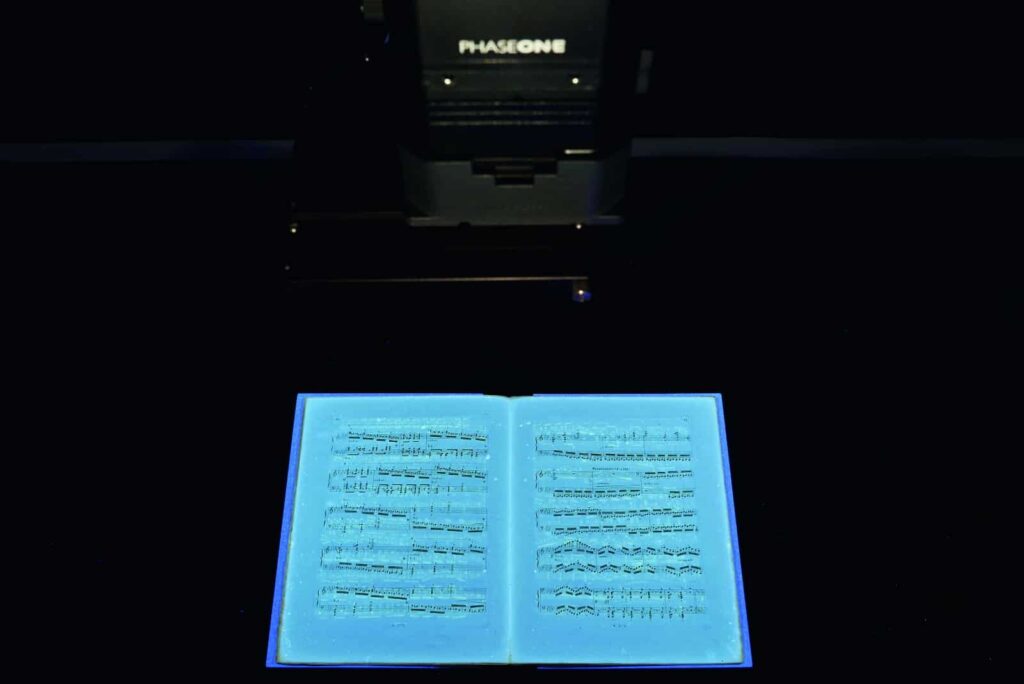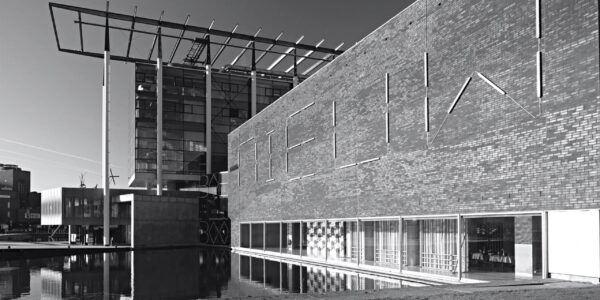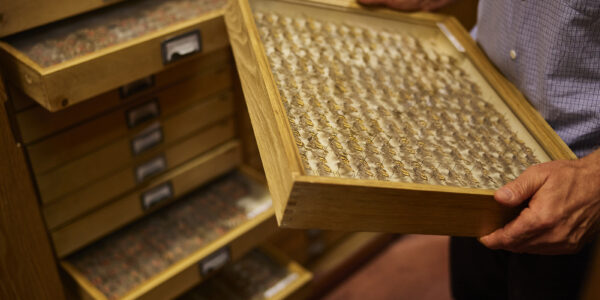The digitization center of the Herzogin Anna Amalia Bibliothek, HAAB for short, in Weimar specializes in the high-quality digital capture of books and manuscripts. In our first part of this case study, you were introduced to their comprehensive set-up for their digital reproduction. This time, we will go more in-depth in how the multipurpose usage of systems and the integration with the uniform Capture One CH software creates valuable synergies for their work. Being on the forefront of analyzing their collection using multispectral light, a non-invasive method that unveils invisible details, HAAB has the ability to provide more than just general reproduction to their research facilities.

During a fire in 2004, they lost a significant amount of their work and learned painfully about the importance of having digital copies of cultural assets. Nowadays they have an impressive digitization portfolio, consisting of 130 terabytes of data, growing consistently. To handle these extensive digitization projects, they have equally high demands for the equipment that they use. They put an emphasis on careful material handling and require the highest detail resolution, technical reproduction, and color fidelity, as well as compliance with digitization standards and guidelines. In addition, the consistency of the digitizing conditions ensures consistent quality in the digital collection.

The digitization center uses three digitization solutions, based on the Phase One iXG and iXH camera systems in various set-ups. Both camera systems include features and automation capabilities specifically designed to meet the unique requirements of cultural heritage digitization projects. In addition to these, Andreas Schlüter (Head of the Digitization department) and Hannes Bertram particularly appreciate the modularity of the Phase One systems compared to normal repro scanners.
Phase One’s camera systems can be used for a wide variety of document types and sizes by selecting the appropriate lenses and integrating them with the necessary lighting and reprographic equipment. These include classic repro table setups, digitization of glass plate negatives with a transmissive light source, and specialist disciplines such as multispectral imaging.

Multispectral Imaging for Scientific Image Analysis
The third and latest system installed in Weimar is the Phase One Rainbow Multispectral Imaging Solution. It expands the range of services offered by Weimar’s cultural heritage specialists to include high-resolution imaging for scientific image analysis. The multispectral camera captures the original to be analyzed with six images: three reflectance images in the IR, white light (VIS) and UV ranges, and three luminescence images (UV-excited visible luminescence, UV-excited IR luminescence and VIS-excited IR luminescence). A broad spectrum from UVA (365 nanometers) through the visible range to the near infrared (1,050 nanometers) is used.
The entire process is controlled automatically by the Rainbow MSI software: from focusing to exposure calibration and evaluation of the multispectral image data. In addition to the six captured images, two false-color images are calculated in the software, adhering to the CHARISMA guidelines. With the help of the multispectral process, it is possible, for example, to make image information visible in faded or damaged originals that remain hidden to the naked eye. In addition to multispectral applications, the system can also be fully used for high-resolution volume digitization.




Uniform software in all places
The versatility and scalability of the cameras are complemented by the Capture One software. Only a seamless interaction of hardware and software creates a highly efficient, high-performance system. Camera systems from other manufacturers can also be integrated into the workflow.
Capture One CH is installed at each of the camera workstations in the digitization center. The software offers all employees the same functions and workflows – from capturing the object to storing it in the archive. The uniform user interface facilitates the planning and execution of projects – requiring little training for employees and student assistants.
Compared to the Capture One Pro software, the Capture One CH version offers special color profiles for reprographic applications and meets the specifications of the digitization guidelines according to the ISO 19264 standard. The batch processing option allows large volumes of image data to be processed automatically. The fast and efficient processing of the high-resolution RAW image files supplied by Phase One cameras is a decisive economic factor in the volume digitization of cultural assets.

PHASE ONE AT HAAB: THE ADVANTAGES AT A GLANCE
Currently, the digitization center in Weimar operates three Phase-One camera systems: The Phase-One iXG 100MP system, installed in March 2019, records at 100 megapixels, while the Phase-One iXH 150MP camera, acquired in 2021, delivers 150 megapixel resolution. The iXH 150MP uses a latest-generation Back-Side-Illuminated (BSI) CMOS sensor for highest resolution, color fidelity and high dynamic range.
- Modular system, adaptable to a wide range of requirements in the digitization process
- Highest efficiency
- Universal use for reflective originals (format DIN A0 with 300 ppi), transmitted light originals (films and glass plates)
- Exact reproduction
- Rainbow MSI multi-spectral system for scientific image analysis
- Ease of use and RAW workflow of Capture-One-CH (Cultural Heritage) software
- Durability and future-proofing
- Comprehensive service and support

ABOUT THE HAAB
The Herzogin Anna Amalia Bibliothek is a publicly accessible archive and research library for European literary and cultural history, with a special focus on the period between 1750 and 1850. More than 1 million media are available for loan and use, and around 150,000 volumes can be used and borrowed on site in the open access area of the study center. The historic library building with its famous rococo hall is visited by around 100,000 people per year. The Herzogin Anna Amalia Bibliothek (HAAB) is part of the Klassik Stiftung Weimar (KSW), one of the most important cultural institutions in Germany.
© Klassik Stiftung Weimar
Get in touch with us about our cutting-edge digitization solutions
If you would like to discuss with us how our solutions can tackle your individual pain points or get a demonstration how we have improved the digitization process of other institutions, then just fill out the enclosed form.

Heritage
Recovering ancient Chinese records with multispectral imaging

Heritage
Norway’s National Library Increases Digitization Efficiency With Phase One iXH 150MP

Heritage
Revealing Lost Evidence of Ålesund’s Fire With Rainbow Multispectral Imaging

Heritage
Digitizing a Serbian Manuscript from the 12th century

Heritage
Digitizing Panorama Formats with Phase One

Heritage
Goethe in Weimar’s digitization center

Heritage
University of Tartu Library

Heritage
Het Nieuwe Instituut (The New Institute) – Rotterdam, The Netherlands

Heritage
Digitizing the Lepidoptera collection at the Hungarian Natural History Museum

Heritage
Digitizing Dinosaurs and the Path to Virtual Exhibitions

Heritage
Getty Images Archive – Phase One iXG 100MP and Film scanning solution

Heritage
The Royal Library of Denmark

Heritage
The Fotothek of the Bibliotheca Hertziana

Heritage
Digital Aerial Photography Archive for Baden-Wuerttemberg

Heritage
Just in the nick of time: the story of an A0 at 300ppi test
